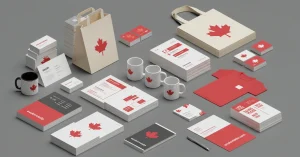
Get 20% Off On Your First Order | User Code: FIRSTORDER
Packaging is often the first thing a buyer sees. Before they try your product, they see how it looks. If the box or label looks smart, clean, and professional, the buyer is more likely to trust it. On the other hand, if it looks messy or cheap, they might skip it—even if the product is good.
People judge by looks, and that includes products. A great label can make your product stand out on a crowded shelf. A poor one can make it disappear.

Your packaging should clearly show what the product is, who it’s for, and why it matters. Think of it as a silent salesperson. In a few seconds, it should grab attention and send the right message—fun, natural, high-end, or whatever fits your brand.
Different products need different kinds of protection.
You should ask:
Good packaging costs money, but so do returns and lost customers. Cheap boxes might break or look unprofessional. Expensive ones might look great but hurt your profits.
You need to balance. Choose materials that do the job and match your price range. Sometimes, spending a little more on packaging helps you sell more.
Your packaging should appeal to the people you want to sell to.
Think about who your buyer is and what they care about. Then design your packaging to match.
More shoppers care about the environment now. They want to buy from brands that use less plastic and more eco-friendly materials. Packaging that is recyclable or reusable can make your brand stand out.
It also shows that you care—not just about sales, but about people and the planet.
Food must be safe and fresh. Good choices include:
Make sure the material is food-safe and seals tightly.
Cosmetics need to look good and stay safe.
These should also be leak-proof and easy to open.
Clothes don’t need heavy packaging but should stay clean and neat. Use:
This makes unboxing feel like a gift.
Electronics are delicate and expensive. Use:
Always test the packaging to avoid damage in shipping.
Cardboard is strong, cheap, and easy to print on. It’s also recyclable. But it can get damaged by water and might not feel very high-end.
Glass looks great and feels premium. It’s also safe for food and skincare. But it’s heavy and breakable, which can raise shipping costs.
Plastic is cheap, light, and useful. It works well for many products. But it’s not good for the environment, and more customers are avoiding it.
Aluminum is lightweight, strong, and fully recyclable. It’s great for drinks, sprays, and creams. But it costs more than plastic.
Yes, if your customers care about the environment. They cost a bit more but help your brand look modern and responsible.
Also Read: 10 Powerful Ways Custom Labels Can Boost Your Product Sales

Paper labels are cheaper and easy to print. But they can tear or get damaged by water. Film labels are stronger, water-proof, and last longer.
Use plastic or film labels if your product faces heat, cold, or moisture. These stick better and stay readable in tough conditions.
Use digital printing for small orders. It’s fast and flexible. For large batches, flexographic printing is cheaper per unit and gives sharp results.
Use the same colors, logos, and fonts everywhere. Keep your look simple and easy to recognize. This helps people remember you.
Minimalist works well for clean and modern brands. Bold designs work for fun or youth-focused brands. Choose what fits your product and audience.
Add small extras:
Yes. Many people choose eco-friendly options—even if they cost more. It makes them feel better about their purchase.
Look for labels like FSC, recyclable, or compostable. These show customers that your claims are real.
Yes. Use recycled materials or avoid extra wrapping. Simpler packaging can be cheaper and still look great.
Too much packaging is wasteful and expensive. It also annoys customers. Use just enough to protect the product and look nice.
Many countries require certain information, such as:
Missing these can cause problems or fines.
Yes. If it’s hard to open, leaks, or breaks easily, customers will be unhappy—even if it looks great.
A skincare brand switched from plastic to glass jars. Customers saw it as safer and more elegant. This helped them raise their price and still sell more.
A snack brand used compostable pouches with clear, simple labels. Shoppers loved the natural look and eco-friendly message.
A clothing company used recycled paper for shipping and added a printed message about their eco values. It helped them build a loyal customer base.
Choose materials that do the job, match your budget, and reflect your brand. Don’t go too cheap or too fancy without reason. Focus on what matters most to your customer.
Always test before you order in bulk. Get opinions. Watch how people open your product. Small changes can make a big difference.
Cardboard boxes with a clean design and simple logo are low-cost and look great.
Film labels last longer, resist water, and don’t fade easily.
Order small samples and ask friends or buyers for feedback. Test shipping too.
Yes, but always check the printer’s options. Some materials absorb ink differently.
If your budget allows, yes. A great design helps sell the product and avoids mistakes.
A label that fits well looks neat. Unique shapes can stand out, but may cost more.
Find a balance. Look clean and professional without spending too much.
Use bold colors, readable text, and clean photos. Make sure the product is clear.
Print them on a flat surface. Link to helpful content like how-to videos or discounts.
Yes. Poor packaging leads to damage, bad reviews, and lost trust.